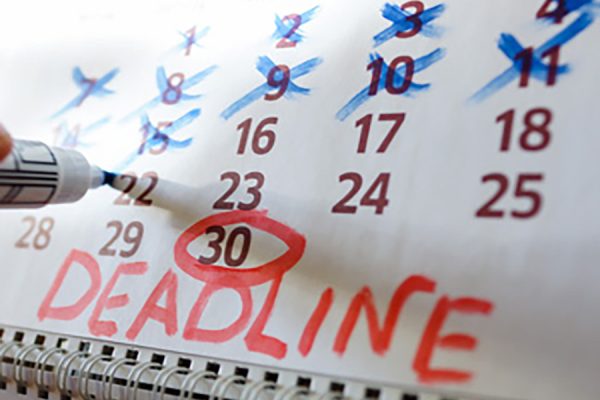Want to double your results? This is how. The accountability, motivation and mental training tool you’re about to learn might become your most effective strategy for getting into peak shape on a specific date. It doesn’t matter whether you’re a physique, fitness, or strength competitor, or you’re a recreational health, fitness or sports enthusiast, if you have goals and you know when you want to achieve them, then I guarantee this will work for you. It’s also one of the simplest strategies you can use. Anyone can do this, and without much effort.

ANNOUNCING… The 2023 Summer Burn The Fat Body Transformation Challenge! Registration Now Open!
This tool is called the “countdown calendar,” or, the “count up” calendar, depending on how you choose to use it. Some people call it an “accountability calendar”, “adherence calendar” or “progress calendar.” One of our members who recently won his division in the Burn the Fat Challenge Body Transformation Contest told me he calls it “Fill in the squares fitness.”
Here’s how it works:
The Power Of A Countdown Calendar
There are two ways you can use this technique, counting forward (up), or counting backward (down). Either way, you’re going to need a calendar.
What you need is a one month at a glance calendar, the type that shows each week of the month stretching horizontally across the page with an open square for each day. You can use a calendar you might already have. Even easier, monthly calendars are widely available to download for free online.
For your convenience, I’ve posted several dated monthly calendars below. I also posted a blank calendar where you can write in by hand the month and year at the top and the dates in each square.
I’ve used wall calendars before, because well, they were already on my wall. However, I prefer to have a dedicated fitness calendar. I print the current month on a sheet of paper and then tape it on the wall in the most prominent place possible, where I have no choice but to look at it every day. At the moment, my calendar is posted next to my bedroom door. I can’t open the door and leave the room without looking at it, so I see it first thing every morning.
This is one of many triggers and reminders you can place in your home and office to keep you focused. One of the reasons people fail to achieve their goals is they simply forget about them. Life is hectic. Other things steal our attention unless we keep them right in our face every day. Always keep your goals and plans in front of you!
If you have a 12-week goal for fat loss, muscle gain, health, fitness, performance, etc., and If you start on the first of a month, you would only need three of these calendars. If you didn’t start on the first, you’d need four calendars, since your 12 week goal target date would spill over into another month.
Here’s what the calendars look like:
Also, here is a blank monthly calendar for you:
If you have a longer term goal, you can increase the number of monthly one-page calendars to match the length of time you have for reaching your goal. (A bodybuilding contest prep, for example, could easily span 4 months or more). Most people, however, set mid-range goals for 12-weeks on average. Our Burn the Fat Challenge Body Transformation Contest is 12 weeks long.
Three months (12 weeks) is a great time frame for setting fitness, fat loss and muscle-building goals. It’s not too far in the future to make it feel like you’ll never get there. It’s not too short term that you can’t measure significant progress.
Break The Multi-Monthly And Monthly Down To The Daily
Now, here’s the secret to achieving a 12-week goal, or any mid range or long range goal: Identify the steps you must take every day to reach your target. That means you need a weekly plan and a list of daily action steps. The way to achieve big goals is one action at a time, one day at a time. As the proverb says, “How do you eat an elephant? One bite at a time.”
Many people keep a 12-week progress chart to track their weekly results for body weight, body composition, and sometimes body measurements (waist circumference, etc.). That’s a great idea, but it’s not the only tracking and accountability tool you should use.
You can also use a calendar to track your daily results and reveal to yourself (and others) what is your adherence rate to your plan, day by day. Do not underestimate the power of this tool for generating focus, motivation and accountability.
There are two types of plans – the nutrition plan and the training plan. The training plan can be subdivided into resistance and cardio training. A resistance training plan includes a weekly schedule, exercises, sets, reps and a few other variables. A cardio training plan consists of the type of cardio, intensity, duration and a schedule, which includes the frequency and specific days of the week and times of the day. You may also have a physical activity plan outside of formal workouts in the form of a total daily step count.
The nutrition plan is a daily plan. The training plan is a weekly plan with training on some days, and no training (recovery) on other days. When it comes to overall physical activity, that’s also an every day plan if you are using step tracking to monitor that.
A calendar is a great way to track your adherence to training, nutrition, or both at the same time. If you successfully complete a day as you planned, you write an X across the box for the day, signifying a day with your all daily goals achieved – nutrition, training, and overall physical activity. If you don’t complete your daily plan (your nutrition and any workouts you had scheduled), you don’t put an X in the box. You leave it blank.
You should decide in advance whether you’ll award yourself credit (an X) if you do a partial workout. Something is always better than nothing. If you do an abbreviated minimalist workout one day because you have a hectic day, you might call that a win and put in the X. But if you miss a scheduled workout completely, you always leave it blank.
Also keep in mind that when it comes to rating nutrition adherence, we’re assuming you are being a flexible dieter in the sense of giving yourself room for discretionary calories. In the Burn the Fat, Feed the Muscle system we recommend 90% or at least 80% adherence to healthy foods.
This also includes adherence to your calorie deficit. Suppose your goal is fat loss and your target is to eat in a deficit every day. If you eat 20% over maintenance one day, that’s not adhering to your plan even if 100% of the food was nutritious and unprocessed. On the other hand, if you had one small slice of cake on Christmas or a couple drinks on New Year’s Eve, and if you stayed in your calorie limits, you were still on your plan, so that’s an X not a zero. If you ate the whole cake or drank the whole bottle, that’s a zero.
If you want to take this to the next level, every week or month, write in the squares what workout will take place each day, and include the time as well. Choosing a date and time you intend to do something and having it committed to writing has been proven in psychology research to double adherence and success rates.
Why Use A Calendar? Accountability And Adherence
So now you have a sheet of paper in front of you that represents the current month of eating and training. You may have blank squares or, even better, you may have taken the time to write in all your workouts and what time they will take place.
When you put an X in the square after completing your daily goals (nutrition and training), this allows you to see visually if you have a streak. You can also count how many days long your streak is and track that number. If you have a zero day, your streak starts over from scratch. If your streak keeps going, you may find yourself growing more and more motivated as your streak gets longer and longer. This is not only positive motivation, it is also negative motivation, as in the fear of loss.
Psychologists and economists tell us that humans are usually motivated more by the fear of losing something than they are by the prospect of gaining something. You won’t want to break a long streak of successful days. If you do, it’s okay. Don’t beat yourself up. Practice self-compassion and get back on your plan the next day. Simply be honest about your adherence and leave the square open if you didn’t achieve your goals for a day.
If you’re accumulating Xs in most of the squares, you are almost guaranteed to reach your 12-week goal. If there are small number of blank squares, the worst that’s likely to happen is you make a lot of progress and fall just a little bit short, or differently stated, it takes you a little bit longer to reach your goal. This is still worthy of celebration because what matters is what you do most of the time. It may be exhilarating to see 84 out of 84 days with an X, but perfection is not required to make progress.
On the other hand, if most of the squares are blank and you don’t have many Xs on your calendar, it’s almost a sure bet that this will correlate to mediocre results or even no results.
People often complain about progress plateaus or feel disappointed with lack of any progress from their dieting and training efforts. It happens. Most people get stuck at one time or another and get temporarily side tracked before getting back on target. The bigger problem is if it happens to you and you don’t know why.
To try to find out why, I would ask them, “Can you show me your training calendar so I can see your adherence level?” Many people would say, “No, I don’t have one.” That’s not unusual, because not many people are informed about this countdown calendar trick. They get a pass. So then I’d ask, “Ok, no problem. Show me your training journal or workout log sheets and your food tracking record in your diet app.”
If the answer returned again was negative, then ahah! We have discovered the problem haven’t we? If you don’t track and measure what you want to improve, how are you supposed to improve it? How are you supposed to know what your adherence level is? You can’t manage what you don’t measure. The Xs on your calendar measure your adherence.
Show me a person with specific goals on paper, a goal card in the pocket, a training plan on paper, a meal plan on paper, a weight and or body composition tracking chart, a training journal or log sheets or a training progress app, and a countdown calendar with lots of Xs on it, and I’ll show you someone smashing their goals.
Counting Forward Or Counting Backward
As I mentioned earlier, you can count forward on your calendar or you can count backwards. Most people count forward, tracking their streaks and monitoring their adherence level. All you do is start from the first square, such as January 1st or whatever your start date is, and mark an X on the calendar every day you accomplish your daily training and eating goals. January 1st: X, 1 day done. January 2nd: X, 2 days done, 2 day streak. January 3rd: X, 3 days done, 3 day streak, and so on, counting forward, 1, 2, 3, 4, up to 84 days if it’s a 12-week goal.
I’ve used the calendar counting up method myself before. It works great. However, you can also count backwards (count down). In the case of training for events with a specific firm deadline, this method might be even more effective. I used this technique for almost all of my bodybuilding contests back in the day when I was training competitively. It was an amazing motivation tool that worked like a charm every time.
You can use the same type of calendars as posted above, but if you do, you’ll have to mark all 84 days up by hand. Starting on the first day, you won’t mark that as day one, you’ll mark it as day T-minus 84. On day two, you’ll mark it as day T-minus 83, 82, 81, 80, 79 and so on down to zero day. See? It’s a countdown. Alternately you can use a calendar that was created for countdowns, like our 12-Week Burn the Fat, Feed the Muscle Countdown Calendar. (You can download it below).
Why do I think this works so well for goals with a concrete deadline like a competition? The first reason is that I believe this counting down day by day will program your subconscious mind to bring you in for a perfect landing on your deadline date.
We should also remember the power of a deadline. Parkinson’s Law says, “Work expands to fill the time allowed for it’s completion.” Someone else once said, “The deadline is the greatest invention in human history.” That might be true, considering almost nothing gets done without the following:
1. Urgency
2. Placing the utmost value on the finite amount of time you have.
If you don’t have impending deadlines to give you a twinge in your stomach that screams, “Take action now, or else!” then you’ll find it easier to say, “I have plenty of time, so an extra treat meal or skipped workout doesn’t matter.” It matters. And it matters most when:
a. There’s little time to spare
b. There’s competition
Many people get close to their deadline realizing they’re behind schedule. If you suddenly realize you don’t have much time left, you tend to panic and engage in last minute scrambling behaviors or you resort to extreme methods and quick fixes. Last minute scrambling is stressful. Last minute fixes can be dangerous, or even deadly, as in the case of diuretic abuse among physique athletes.
The countdown calendar method makes you acutely aware on a daily basis of how much time you have left, and every day, you see the amount is shrinking and your window of opportunity is closing. You’ll get more focused and more motivated with each passing day as you see the deadline getting closer and closer. The urgency to get the job done increases with each passing day as the number of days remaining keeps shrinking.
If you’re in a competition, and you’re “in it to win it,” the countdown method also makes you realize that every day you don’t take advantage of fully, your competition takes one step ahead of you.
Put Your Subconscious to Work and Peak on the Day That Counts
This technique works on the subconscious level in a remarkable way. As the goal and deadline date are repeatedly communicated to your brain every day, you are sending an unmistakable set of instructions to your subconscious mind, not only to get in shape, but to get in peak shape on a specific date.
If you think about it, it’s an incredible achievement to hit your physical peak on a single day of the year, especially the way bodybuilding, fitness and figure competitors do it. Arguably, it’s too monumental of a task for the conscious mind to pull off on its own. But your unconscious mind has the power to change your daily behaviors in a subtle but significant way that will adjust your course to make a perfect landing like a fighter jet on an aircraft carrier.
If you’re behind schedule, you may start working a little harder in the gym or you may eat a little less without even realizing it consciously. That’s your unconscious guidance mechanism at work, which you have activated by setting a goal with a deadline and reinforcing the urgency of the deadline on a daily basis.
Peak Your Physique With The Streak Technique!
Another benefit of the countdown calendar is the momentum you build with every day in a row you complete your daily goals. In addition to Xing off the boxes on your calendar (counting either up or down), you can also track the number of days in a row that you’ve adhered to your plan. You may find that the longer your string of successful days, the more motivation you have to keep your streak going and not miss a day.
If you’re a sports fan, this concept will be familiar. When you look at the standings each week for the NFL or other teams, you see a weekly stat for “streak” which says something like “won 5” or “lost 3” and so on. The difference is, I recommend only keeping track of your wins.
You do have to be cautious about becoming obsessive over streaks or it can backfire on you in the long term. The way the streak technique works, if you miss a day, you start your streak count over again. Because it’s so frustrating to go back to zero, this is why tracking the streak is so motivating for some people not to miss. However, in the case of fitness and health benefits, it’s vital to understand that you DON’T go back to zero physically by missing one day and you don’t ruin an entire program by having an off day.
Many people think that if they miss a single day, it ruins their entire program, ie, “I missed a workout today, so I ruined my entire 12 week cutting phase” or “I messed up one meal, so my whole day is blown!” Of course this kind of all or none thinking is erroneous, but perfectionistic attitudes are common in fitness endeavors. Remember, if you allow yourself treat meals or include an adherence rule such as, “90% of all meals will be on schedule and consist of healthy foods,” then 90% adherence is 100% success isn’t it?
I’m a fan of setting long-term goals and being consistent for months and years on end, but I don’t believe it’s always wise to pursue very long streaks. It’s arguably smarter to work to a peak and then know when to back off, take breaks and recover, then pursue another mid-term goal.
I know a man who ran every day for 11 years without missing a day. He was so proud of his streak. On many occasions he ran inside the hallways of hotel rooms, if necessary. When he started having knee pain, he continued to run through the pain for fear of blowing his streak. The pain got worse and eventually he had to stop running. When he did, the day he blew his 11 year streak was more painful emotionally to him than physically and he got depressed.
In other cases, after a long streak, nothing goes wrong physically, but the pressure of continued success and perfection builds up and causes someone to choke. Or consider the case of the fighter with the undefeated streak, and then everyone then wants to knock him out and off the top of the heap.
Click On The Image Below And “Save As” To Download A 12-Week Countdown Calendar

The method I’ve described above uses a monthly progress calendar (30 or 31 days, except February), to track adherence to your overall plan as you work toward a mid-range goal (usually 12 weeks). When you write an X on your calendar, it signifies that you completed all your daily goals, including nutrition and training. On days you’re not training, then the X signifies you stuck to your nutrition plan.
Another way you can use a calendar is as a planning, focus, and adherence tool for a specific training program. I use this technique all the time. Almost all of our training programs at the Burn the Fat Inner Circle include training calendars.
We recently released a program called 3/1 Hybrid Muscle for our Burn the Fat Inner Circle members. It’s an unusual split routine where you do a 3-way split in the beginning of the week and 1 full-body workout at the end of the week. There are 4 workouts a week in total.
At the time I was writing this article, I started using 3/1 Hybrid Muscle in November and was almost finished with phase 2 in December. Pictured below is my actual calendar, taped to my bedroom wall. You can see the 4-week training block is almost completed. I did not miss a single workout. The one box that has no X yet is a day that hadn’t arrived yet (I took the screenshot on December 21st).

Parting Advice…
In conclusion, I recommend you use the count-up or count-down calendar method every time you have an important mid term (12 weeks) or short term (1 month) goal.
Could you use this for long term goals? Sure, but the way to do that is break it down. Want to lose 75 pounds and think it will take a year to achieve? Great, but I wouldn’t recommend mapping out 12 months in advance in one chunk. Instead break it down to 12 week long sub-goals.
Count up or down, whatever feels right for you. If it suits your personality, use the streak technique as well and track how many days in a row you can notch another X, as long as you know you won’t get obsessive about it over the long term.
You can also use the calendar and streak techniques as tools to help you build any new habit (something you want to start doing) or break any old habit (something you want to stop doing). Days in a row walking at least 30 minutes, rain or shine? Excellent! Days in row without a drink? Sure. Days up at 5:00 am? Great idea! You can apply this technique so many ways.
For fitness and physique goals – especially bodybuilding, fitness, figure or transformation contests, this is powerful. Try it, and I promise you, the countdown calendar will become one of your secret weapons.
Sincerely,
Tom Venuto,
Founder and CEO, Burn the Fat Inner Circle
Author of Burn the Fat, Feed the Muscle
PS. The 2023 Summer Burn the Fat Challenge Body Transformation Contest is now Open! The entry window is open until May 27th, 2023. Join us! It’s free! CLICK HERE
Tom Venuto is a natural bodybuilding and fat loss expert. He is also a recipe creator specializing in fat-burning, muscle-building cooking. Tom is a former competitive bodybuilder and today works as a full-time fitness coach, writer, blogger, and author. In his spare time, he is an avid outdoor enthusiast and backpacker. His book, Burn The Fat, Feed The Muscle is an international bestseller, first as an ebook and now as a hardcover and audiobook. The Body Fat Solution, Tom’s book about emotional eating and long-term weight maintenance, was an Oprah Magazine and Men’s Fitness Magazine pick. Tom is also the founder of Burn The Fat Inner Circle – a fitness support community with over 52,000 members worldwide since 2006. Click here for membership details









Leave A Comment